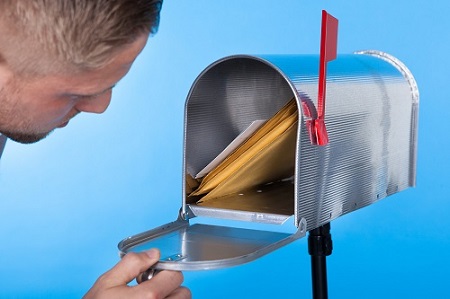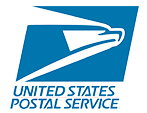Did you know that direct mail has a response rate up to 30 times higher than email?
That’s right — a good direct mail campaign can massively boost business and help get your brand in front of the right people.
However, it’s not as simple as throwing together a quick flyer and hoping for the best. A successful direct mail campaign needs to be well planned, with clear goals and informed design choices.
Want to know what to exactly avoid when creating a direct mail postcard campaign?
Keep reading for all the information you need to ensure that your campaign doesn’t fall flat.
1. Not Setting a Clear Goal for Your Campaign
What are you hoping to achieve with your direct mail campaign?
If you’re not sure, then you can’t expect to succeed.
Setting a clear goal helps you to design the right kind of postcard, target the correct people, and track your results properly.
If you’re a new business, you might simply want to raise awareness in your local area. If you’ve been established for a while, you might be looking to promote a new product or service.
Always set a clear goal right at the start of your campaign to avoid costly mistakes later on.
2. Sending Postcards to the Wrong People
Who are you planning to send your direct mail postcards to?
Will you be targeting a certain geographic area? Sending them to existing customers? Or directing them at a specific group, like new homeowners?
Knowing exactly who to target prevents you from wasting money by sending postcards to people who aren’t relevant
Do your research to figure out who’s most interested in your business and most likely to respond to direct mail. That way you’ll have the best chance of getting a good return on investment.
Research shows that 77% of Millenials pay attention to direct mail, so it’s worth considering the younger demographic when designing your campaign.
3. Failing to Personalize for Different Groups
Are you sending the exact same postcard to everyone?
This is a big mistake.
A postcard aimed at new movers should look different to a postcard for people who’ve lived in the area for decades — and you may also want to make adjustments based on age, gender, and income.
For example, the postcards you send to an affluent neighborhood could focus on your luxury services, while you might advertise your budget options elsewhere.
4. Focusing Too Much on the Hard Sell
Are you hoping to close sales with your direct mail postcards?
This isn’t usually the best method, especially if your business isn’t well-known. In fact, making your postcard too sales-y could land it straight in the trash.
Instead, use your postcard to grab attention, then direct customers to your website, ask them to call you, or encourage them to drop by.
This way, you’re building a long-term relationship with a potential buyer instead of bombarding them with aggressive sales pitches.
5. Not Including a Special Offer or Discount
What makes customers more likely to act after receiving a postcard from you?
A great special offer or discount, of course.
Including a promotion that’s only for recipients of direct mail is a great way to encourage them to take action. It could be a free trial, a discount, a two-for-one offer, or a referral bonus.
Choose a discount that makes sense for your target market.
An existing customer you’re looking to retarget might really appreciate a referral bonus, while a brand new customer will most likely prefer a freebie.
6. Leaving in Spelling Mistakes
Want to avoid having your postcard thrown straight in the trash?
Make sure you proofread thoroughly. Postcards which include spelling mistakes, typos, and grammatical errors look unprofessional and could seriously damage your brand’s reputation.
If you’re not confident in writing your own copy, don’t be afraid to outsource to an expert.
7. Not Hiring a Professional Designer
Do you want your direct mail campaign to show your business in the best possible light?
Unless you’re a professional designer, it pays to hire an expert to create a postcard that looks great. First impressions count when it comes to direct mail, and a bad postcard won’t get a second look.
On the other hand, a well-designed postcard will get customers excited about engaging in your business. They might even pass it on to friends, increasing your exposure at no extra cost.
8. Forgetting to Include a Call to Action
What do you want people to do once they’ve read your postcard?
Get in touch for a quote? Visit your website for more details?
Make sure there’s a clear call to action visible on your postcard so that customers known exactly what to do next.
Keep it simple and think about what’s easiest for your target demographic. For example, you might ask younger people to follow you on social media, but encourage older recipients to give you a call.
9. Failing to Track Campaign Results
The work isn’t over once you’ve executed your direct mail campaign — you should also track the results so that you can decide where to direct your efforts in the future.
Simple steps like asking customers to mention the postcard when they call or using a special discount code on certain flyers make it easy to see which prospects come from which campaign.
Use this data to figure out what works best and make your next campaign even more successful.
Be sure to look back at your initial goal to stay focused when tracking your results.
What Makes an Effective Direct Mail Postcard?
An effective direct mail postcard is one that’s designed with a clear goal in mind, sent to the right groups of people, and personalized accordingly.
You should focus on increasing brand awareness and encouraging customers to get in touch — not making a hard sell.
Be sure to track the results of your campaigns, as this will allow you to make changes that increase the success of your future efforts.
Need help executing your first direct mail campaign? Contact us today for expert assistance every step of the way.






